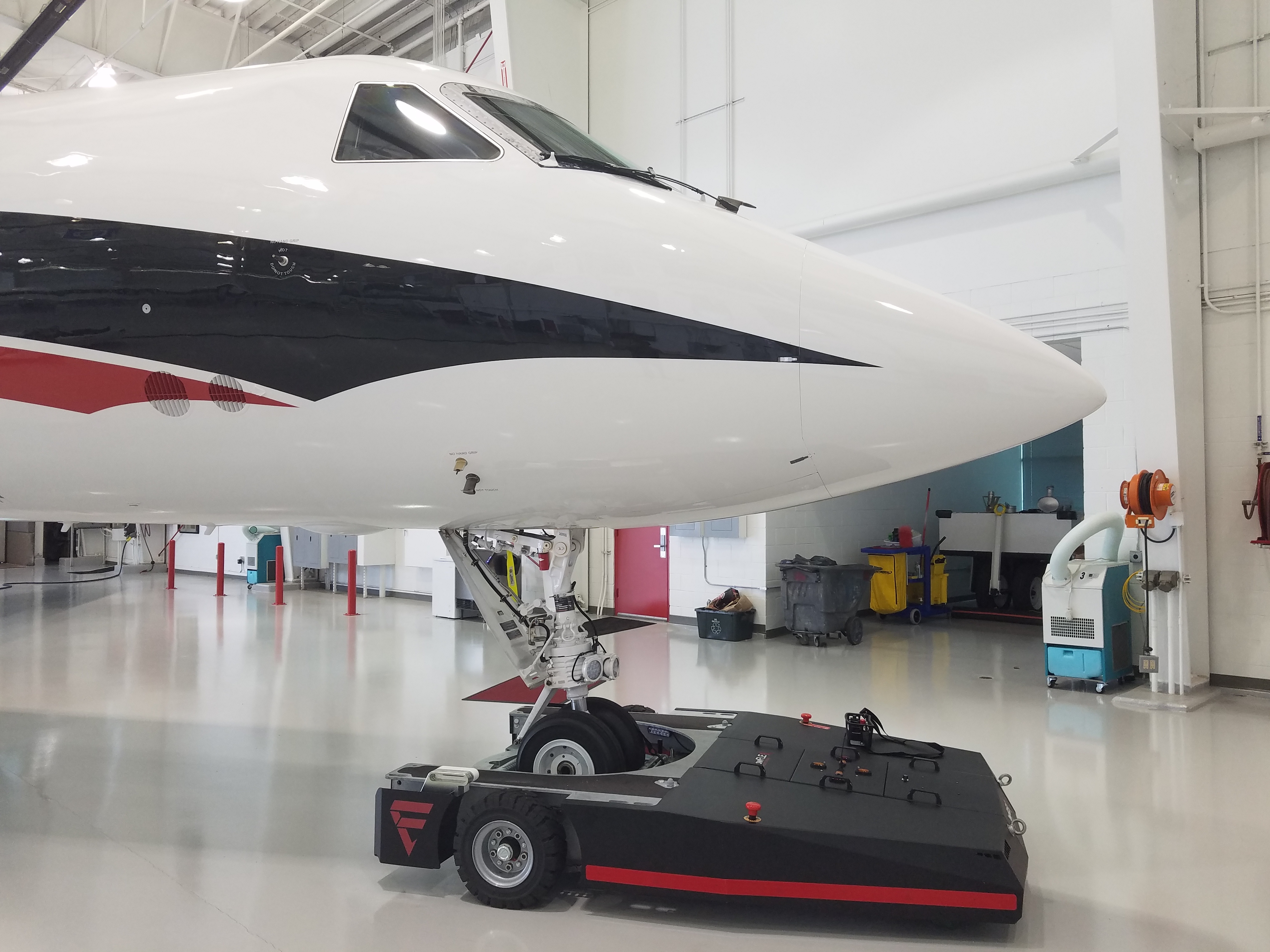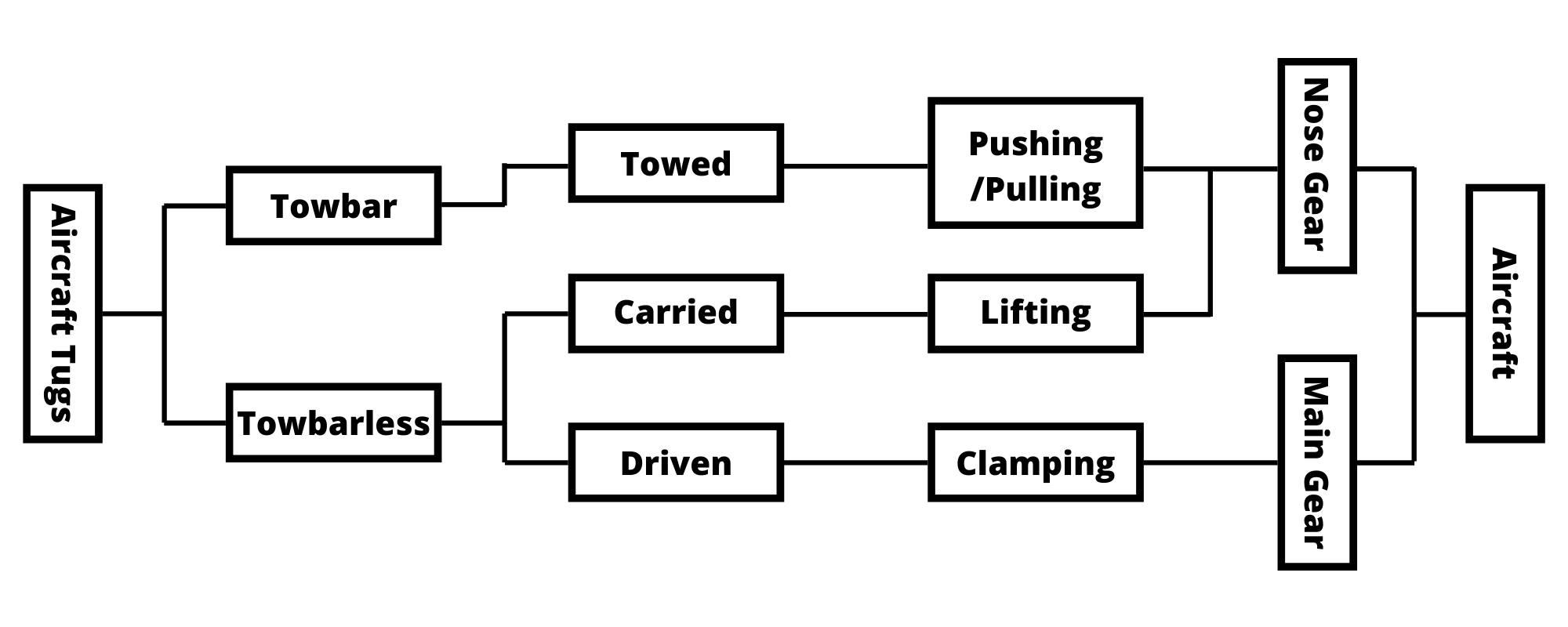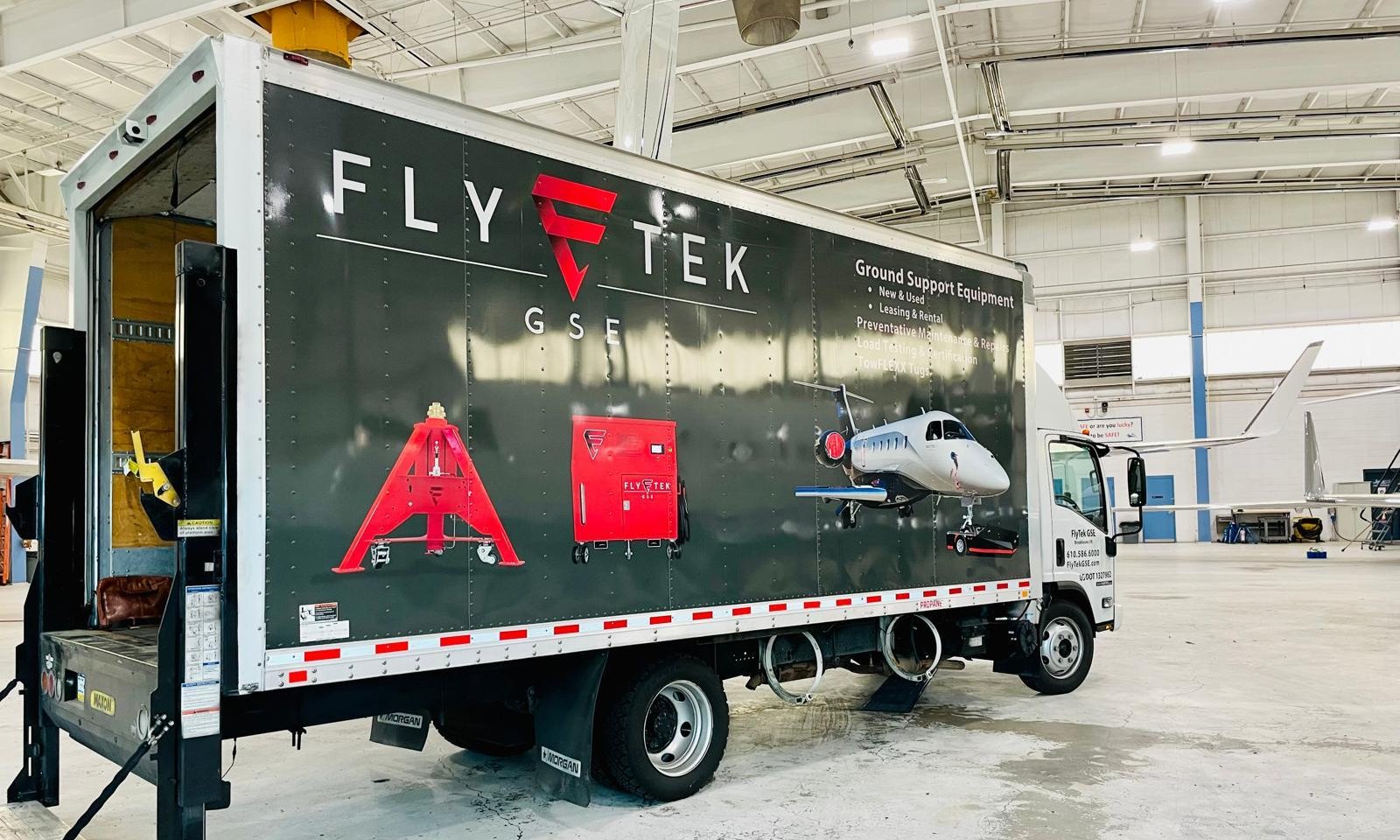When it comes to towing aircraft, powered tugs are the number one solution. We have previously covered the major types of tug in our post on how to choose the right kind of aircraft tug. But while that article discusses the different types of tugs available, it does not focus on the different ways in which tugs are actually used for the day to day moving of planes — and other important airport equipment.
In this article we will discuss the two main categories of tugs, the three main relationships between aircraft and tugs, and the two main aircraft and tug connection points.
Towbar vs. Towbarless Tugs
As we have covered before, the two main categories all aircraft tugs fall into are towbar and towbarless tugs. Regardless of which category a tug falls within, there are a variety of options available, such as both combustion and electric engines. And as we’ll see, tugs from both categories are viable in different situations.
Pros and Cons of Towbar Tugs

Towbar tugs have a simple and flexible design which allows them to be used in many diverse situations — and may reduce repair and maintenance costs. Because the tugs themselves do not actually come in direct contact with the aircraft they are moving, they can be used for every type of plane. Additionally, these tugs can even be used for non-aircraft specific uses. They can be attached to any other heavy object which needs to be moved from one place to another around an airport or hangar.
However, that simplicity and flexibility comes with a price. Towbar tugs are less efficient than their towbarless counterparts. They have a larger turn radius, require more workers to operate them, move at slower speeds, and have an increased set up and break down time associated with connecting the towbar. So while a towbar tug may be used for a wider variety of situations, it takes up more time and resources to accomplish this. And, potentially the biggest con is that while towbar tugs themselves can be used with any plane, they require the correct towbar associated with the plane model.
Pros and Cons of Towbarless Tugs

Towbarless tugs effectively solve the major problems with their towbar-having counterparts. They are smaller, faster, and more nimble. And while towbarless tugs can be more expensive upfront, they easily pay for themselves in the long run. Their speed makes towing aircraft take less time, and their low profile and ergonomic design means they can be used in tight spaces where traditional towbar tugs cannot. Additionally, they only require a single operator, and in some cases can be operated via remote control — reducing operational costs. Finally, these tugs also consume less energy, which means lower fuel costs or a longer battery life depending on which type of engine your tug has.
Aircraft/Tug Relationship
The relationship between aircraft and tug is one which is often overlooked. There are three main relationships, and which one is used will depend on both the aircraft and tug in question. The simplest of these relationships is when a towbar tug is in use. When this is the case, the aircraft is always being towed via the towbar, which means the tug is either pulling or pushing the plane (or other large object).

If a towbarless tug is in use, then the aircraft is not going to be towed. Instead, there are two other options. Either the aircraft is going to be carried or driven. When we say that an aircraft is carried, it does not mean that the entire aircraft is off the ground. It simply means that the tug lifts and carries the landing gear to which it is connected.
When an aircraft is driven, the tug clamps directly onto the connecting landing gear. This is different from towing because there is no towbar involved — the tug and plane are in direct contact. It is also different from carrying because the landing gear is not lifted off the ground. Generally speaking, driving aircraft in such a way is reserved for the largest of planes. Anything smaller can typically be either towed or carried without issue.
Aircraft Tug Connection Point

Once the relationship between aircraft and tug has been established, the final piece of information you will need is the connection point. Every plane will have both nose (front) and main (rear) landing gear, and which is used for towing the aircraft depends on how it is being moved in the first place.
If the aircraft is being either towed or carried, then the nose landing gear is the connection point. When towed, the towbar will be connected to the axle. When carried, the entire nose gear assembly will be lifted from below with the tug securing the wheels in place.
The main landing gear is used when the aircraft is being driven. The tug will clamp onto both sets of rear landing gear while the wheels remain on the ground to support the weight of the plane.
Conclusion
When it comes to aircraft tugs, one of the major factors which is overlooked is how the category the tug falls within affects how it is used. Towbar tugs can be used for towing aircraft via their nose landing gear, or towing just about any other large object which requires moving. On the other hand, towbarless tugs can either carry or drive aircraft, and their connection point can be either the nose or main landing gear depending on how the aircraft is being moved.
FlyTek Aircraft Tug Maintenance & Repair
Whether your aircraft tugs are in need of repair, or just some routine maintenance, it is important not to put it off until later. At FlyTek GSE we understand that taking your ground support equipment out of commission for repairs or maintenance is not ideal. Sending your equipment away to be repaired is costly and time consuming, which is why our onsite repair team will travel to your place of business. Contact us today to schedule your tug repair or maintenance.



